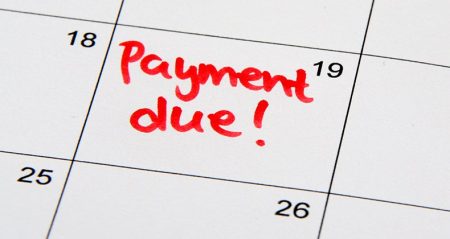Key takeaways
- Declaring bankruptcy doesn’t necessarily mean you’ll lose your car.
- If you’re declaring Chapter 7 bankruptcy, you could keep your vehicle if it’s below the exemption limit.
- If you declare Chapter 13 bankruptcy, you’ll most likely keep your car while making payments under a modified loan agreement.
- It’s also a good idea to examine whether you need your car while in bankruptcy.
Bankruptcy is considered a last resort for clearing debt, used only when you’ve tried and exhausted all other options. Bankruptcy can reduce your credit score. It could also mean you lose some possessions — including your car.
But this isn’t always the case. Whether you keep or have to sell your vehicle through the bankruptcy process depends on factors like what type of bankruptcy you file, if you own the car and the state you live in.
What happens to your car in Chapter 7 bankruptcy?
Chapter 7 bankruptcy is called “liquidation bankruptcy.” Under this arrangement, you must sell your non-exempt assets (those not protected from the bankruptcy court) to pay off debts. That could include your car, but it might not.
There are ways in which you could keep your car in a Chapter 7 bankruptcy. One of these is to check for available exemptions.
Exemptions: Protecting your assets
A vehicle exemption could protect your car from seizure by the bankruptcy court. An exemption depends on a couple of things: where you live and how much equity you have in your vehicle.
To calculate the equity on your vehicle, take the fair market value of your car (which can be obtained by checking out Kelley Blue Book, Carfax or Edmunds). Then subtract what you still owe from that fair market value. That will be your car’s equity. Meanwhile, If you own the car outright, 100 percent of that asset’s equity is yours.
Once you know your car’s equity, you can determine if an exemption allows you to keep the vehicle. You could take advantage of the federal exemption, which is $4,450. If your car’s equity is $4,450 or less, it’s protected from the bankruptcy court.
Your state’s exemption could be higher than what the federal government offers. For instance, if your state’s vehicle exemption is $5,000 and your auto’s equity is $3,000, the car is considered protected from the court.
However, if your auto’s equity exceeds $5,000, you could use a wildcard exemption, which allows you to protect any asset in a bankruptcy scenario. The downside of this is that not all states have wildcard exemption provisions.
Reaffirmation agreement: Changing the loan’s parameters
When you financed your car, you used a lender to obtain a loan. You could struggle to pay that loan if you’re facing bankruptcy. You might even need to catch up on some payments.
This is where a reaffirmation agreement comes into play. Through this process, you shake hands with the auto lender on a new loan contract. That agreement could mean changing what you need to pay, the interest rate and the loan length.
The reaffirmation agreement could help lower your payments while staving off potential lender repossession. It also enables you to rebuild your credit after your bankruptcy is discharged, as lenders report the payments to the three credit agencies.
There are a few things to remember with this method:
- A reaffirmation agreement might reduce how much you’re paying, but it also removes any protection you might have from the bankruptcy court — this is a deal you’re making directly with the lender.
- You have 60 days to submit a reaffirmation agreement to the bankruptcy court for approval. The court must approve the plan for you to move forward.
- If you fall behind on payments, the lender could repossess your car or even sue you.
- Unlike other debts discharged in bankruptcy, a reaffirmed agreement remains your responsibility.
Redemption: Paying it all off
Another way to keep your car when involved with a Chapter 7 bankruptcy filing is to buy it outright. In legal terms, this is called redemption.
Through the redemption method, you make a single lump-sum payment to the lender equal to your car’s fair-market value (or how much it would be worth selling it on the market). The loan is paid off, you own your car outright and (depending on equity and exemptions) you get to keep it.
This can be a good alternative if your loan exceeds the car’s value. The downside of this process is that you need to come up with that single lump-sum payment. You probably wouldn’t be filing for Chapter 7 bankruptcy if you had that money.
A sympathetic relative could be helpful in such a situation. Some companies specialize in redemption lending, though such loans have high interest rates.
What happens to your car in Chapter 13 bankruptcy?
Unlike Chapter 7’s asset-liquidation format, Chapter 13 bankruptcy involves a reorganization plan for your finances. You don’t sell assets to pay creditors. Instead, you and the court agree to a repayment plan by which you repay a portion of your debt to creditors over a three-to-five-year period.
How does this impact auto ownership? If you own the car outright and its value is below your state’s exemption limits, you can keep it. However, if the value exceeds the exemption limits, you can still keep the car if you pay the remaining nonexempt equity as part of your bankruptcy payment plan.
What about if you’re still paying off an auto loan? You will likely get to keep your car. Additionally, there are ways in which that loan might be restructured.
Repayment plan: Slow and steady
The idea behind a Chapter 13 reorganization is to repay creditors by reorganizing what you owe into a more realistic payback plan. Putting your car loan in as a debt for repayment means that the balance owed will be restructured like your other bankruptcy debt. You could end up paying less. A bonus is that you could see a decrease in the loan’s interest rate under bankruptcy law.
Assuming you stick to the three-to-five-year repayment plan, the court will discharge your bankruptcy and any remaining balances, including your car loan.
Cramdown: Revising the loan
One benefit of a Chapter 13 filing is that you could use a cramdown, which can reduce your auto loan’s balance and interest rate. Through a cramdown process, the lender accepts a revised loan with a lower balance (and a smaller payment). A cramdown is unavailable if you’re working with a Chapter 7 bankruptcy.
A cramdown can be helpful for both you and the lender, especially if you’re upside down on your car loan — the loan balance is higher than your car’s value. A lower balance means you’re not paying as much. From the lender’s perspective, it’s also an incentive for you not to surrender the car but to continue making payments on it.
However, you must have owned your car for at least 910 days before using the cramdown method. This prevents consumers from buying new cars, immediately filing for Chapter 13 reorganization, and attempting to reduce what they owe the lender.
Should you keep your car in bankruptcy?
You can take steps to keep your car if you’re working through a Chapter 7 or Chapter 13 bankruptcy. But is it a good idea to hang on to that vehicle?
Only you can answer that question. Consider:
- The car’s value and equity
- Your current financial situation
- Costs to operate your vehicle
- The remaining length of the loan
- The lender’s willingness to take the car back
- Other feasible transportation options in your area
Once you’ve examined everything, you might feel that keeping your car during bankruptcy is a priority. Or you could realize that you might do quite nicely without one. You might conclude that getting rid of your car — and all the expenses involved with managing it — might be better for your situation.
Either way, it’s important to assess how you use the car, its importance to your daily routine, and the economic necessity of keeping it.
The bottom line
Before moving forward on a Chapter 7 or Chapter 13 bankruptcy, understand exactly how it will affect your car ownership. The best step is to pay off your vehicle’s loan if you’re able. This gives you the best chance of keeping it while you work through the process.
Also, work with your bankruptcy lawyer on issues like exemptions. This will increase your chances of filing a bankruptcy petition that will allow you to keep your car as you attempt to rebuild your financial foundation.
Read the full article here
















